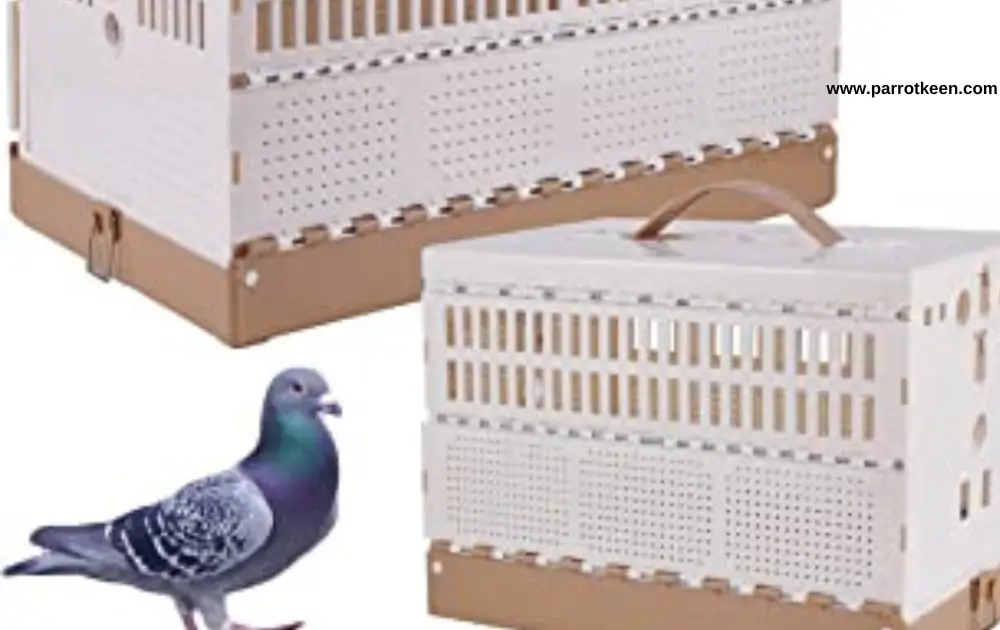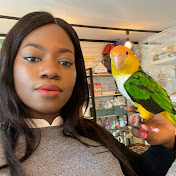
How Long Can A Bird Stay In A Box?
Are you planning on going on a vacation or picnic with your bird? You might wonder how long a bird can stay in a box. The answer to that question is not as simple as you might think.
Many people wonder if putting their bird in a box is safe, but the truth is that it can be safe if you do it properly.
Possibly, your bird is injured, and you need to bring it to the vet. In that case, you will have to confine your bird in a box for transportation.
In this blog post, we will explore how long a bird can stay in a box and what factors influence that.
We will also discuss some of the reasons why birds might want to leave their boxes. So if you’re curious about this topic, read on!
How Long Can A Bird Stay In A Box?
It is commonly believed that birds cannot be kept in boxes for long periods, but this is not necessarily true.
Most birds do best when they have a lot of space to move around. This allows them to spread their wings and get some exercise.
However, there are times when a bird may need to be confined to a smaller space, such as during transportation or when being treated for an injury.
In these cases, ensuring that the bird has enough room to move comfortably and that the enclosure is free of any hazards is important.
As a general rule, a bird should have at least four times its body size in terms of floor space.
For example, a small bird like a finch would need a cage at least 16 inches long by 16 inches wide. Larger birds, like parrots, would need an even larger enclosure, such as 24 inches by 24 inches.
With proper care, most birds can safely stay in an enclosure of this size for extended periods.
How To Transport An Injured Bird In A Box?

First, line the bottom with soft materials such as towels or blankets to transport an injured bird in a box. This will help to cushion the bird and prevent it from moving around too much during transport.
Next, gently place the bird inside the box, making sure that its wings are tucked close to its body. If possible, secure the box lid with tape or string to prevent the bird from escaping.
Finally, bring the box to your local wildlife rehabilitation center or vet clinic so the bird can receive professional care. By following these simple steps, you can help to ensure that an injured bird gets the treatment it needs.
How Do You Keep Birds In A Box?
The easiest way to keep birds in a box is to put a lid on the box. This will prevent the birds from escaping and protect them from predators. You can also put some netting over the top of the box to ensure the birds cannot get out.
If you are keeping more than one bird in a box, you will need to ensure that there is enough space for all of the birds to move around and that there are perches for them to sit on.
The box should also be big enough so that the birds can stretch their wings and move around freely.
Can A Bird Breathe In A Cardboard Box?
At first glance, it might seem like a bird would have a hard time breathing in a cardboard box. After all, cardboard is not exactly known for being breathable.
However, birds can breathe quite well in a closed cardboard box, as long as the box is not waxed. Air holes are unnecessary, as the bird will be able to get all the oxygen it needs from the air already inside the box.
Birds have a high respiratory rate, which means they take more breaths per minute than other animals. This allows them to rapidly exchange oxygen and carbon dioxide, even in an enclosed space.
So next time you need to transport a bird, don’t worry about whether or not the box has air holes. As long as it’s made of unwaxed cardboard, your feathered friend will be just fine.
However, to be on the safe side, punching holes in a pencil size box will give the bird more air. If you have a big bird, you might want to make the holes bigger, so that they can’t escape.
Do Birds Need Food and Water In A Box?
When transporting a bird in a box, it is crucial to ensure it has food and water. This will help keep the bird hydrated and provide it with the energy it needs to stay warm.
You can provide food and water for a bird by placing a dish of water and some bird seed in the box. Ensure that the water dish is shallow and that the bird seed is easily accessible so the bird can reach it.
If you are only transporting the bird for a short distance, you may not need to provide food and water. However, if you will be traveling for more than an hour or so, it is always a good idea to have food and water available.
Factors that Influence How Long A Bird Can Stay In A Box
According to a study, the average bird spends about 10% of its day perched on a branch or wire. Several factors influence how long a bird can stay in a box.
The amount of time a bird can spend in a box is determined by several factors, the most important of which are the size of the box and the number of birds.
A small box will quickly become overcrowded, leading to stress and aggression among the birds. In contrast, a large box will give the birds plenty of space to Move around and avoid each other.
The number of birds is also essential, as a single bird will have more room to maneuver than a group. In addition, the type of bird will also influence how long it can stay in a box, with larger birds needing more space than smaller ones.
In addition, weather conditions can affect. Hot weather conditions can cause birds to overheat, while cold weather can lead to hypothermia.
The type of bird also plays a role in how long it can stay in a box. Smaller birds, such as finches and canaries, can usually stay in a box for up to 24 hours without any problems. Larger birds, such as parrots and eagles, will likely stay in a box for a few hours.
The bottom line is that there is no one-size-fits-all answer to the question of how long a bird can stay in a box. The best thing to do is to consult with a veterinarian or experienced bird keeper before transporting your feathered friend.
By considering these factors, you can ensure that your bird has plenty of space to relax and avoid conflict.
Reasons Why Birds Can Leave A Box?
There are several reasons why birds might want to leave a box. They are:
- One reason why birds might leave a box is if it is too small. If the box is too small, the bird will feel cramped and uncomfortable, and it will be more likely to try to find a new home.
- If it gets too hot or too cold inside. If the temperature is not comfortable for the bird, it will seek a more comfortable place.
- Not enough food inside. If the bird feels like it is not getting enough to eat, it will look for a new place to live.
- Boredom. If the bird is bored, it will want to find a new place to explore its surroundings.
- Finally, if there are other animals inside. If the bird feels like another animal is threatening, it will try to find a safer place to live.
How to Transfer A Bird from A Box Into A Cage
Animals that hunt by birds. A “fight or flight” response is frequently triggered by fear and anxiety.
A scared bird would typically flee to a high, wide location or a place where they may hide as their first impulse.
Some birds might be too traumatized to leave carriers or cages at all, while others may bite or act violently.
First, think about the hazards associated with handling small versus large birds. While smaller birds like cockatiels, lovebirds, finches, and budgies are less likely to bite you severely, they fly considerably quicker than larger birds and are more challenging to catch in flight.
Large birds with powerful beaks, such as cockatoos, macaws, or amazons, are likely to respond angrily and could hurt their handlers.
Follow the simple steps below to successfully transfer your bird from a box into its cage.
- Put the carrier in a space that is as tiny and contained as you can. It will make it simpler for you to recover a bird in the event that it does escape.
- Utilize a spacious closet or an examination room.
- Close all windows and doors, and draw the blinds and drapes.
- Block off difficult-to-access locations, and make sure all other animals are confined.
- Keep in mind that birds can fly up to exposed pipes or light fixtures in rooms with high ceilings.
- Wait until highly anxious birds have calmed down before handling.
- Prepare your equipment: handling little birds with washcloths and larger cotton towels for
- Medium to large birds, a net for escaping birds, and a sizable blanket or sheet to block escape routes.
- Setting up the receiving cage: Prior to actually transferring the bird from the carrier to the cage, perches, food and water bowls, and other furnishings should be in place.
Conclusion: How Long Can A Bird Stay In A Box?
Ornithologists have conducted several studies on how long a bird can stay in a box, and the results are varied. Some say that a bird can only stay in confinement for up to three days before it goes crazy, while others claim it’s not advisable to keep a bird in a box for more than 24 hours.
Tell us, have you ever kept your bird in a box for an extended period? If so, how did it go? We would love to hear your stories in the comments below!

Hi, I am Thersa and Welcome to ParrotKeen, your number one place to get all the information you need about your cute parrot. I hope You Find it useful.
